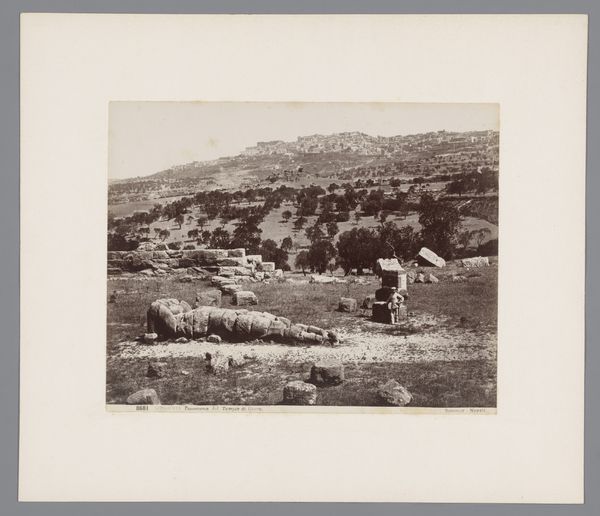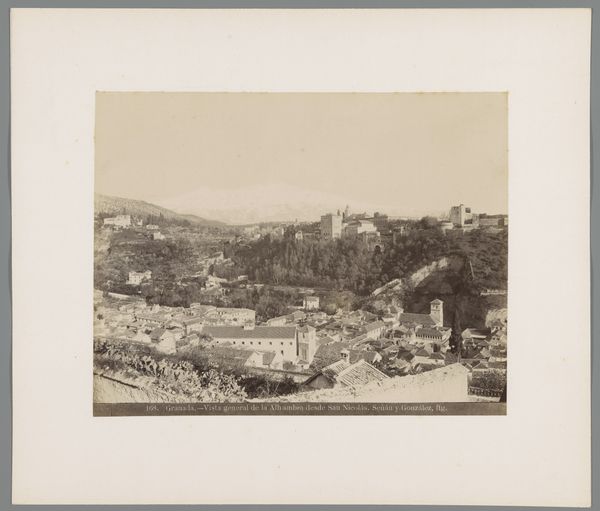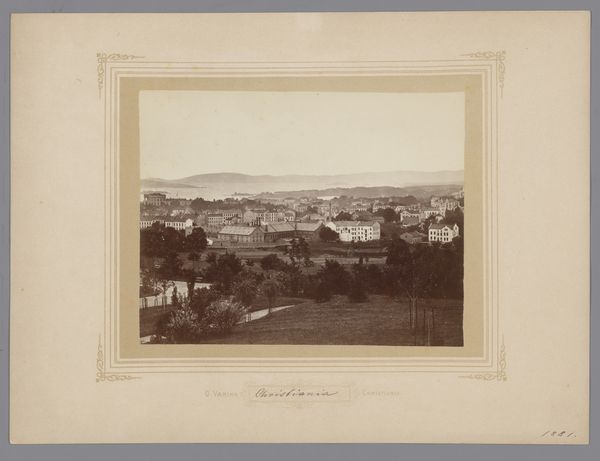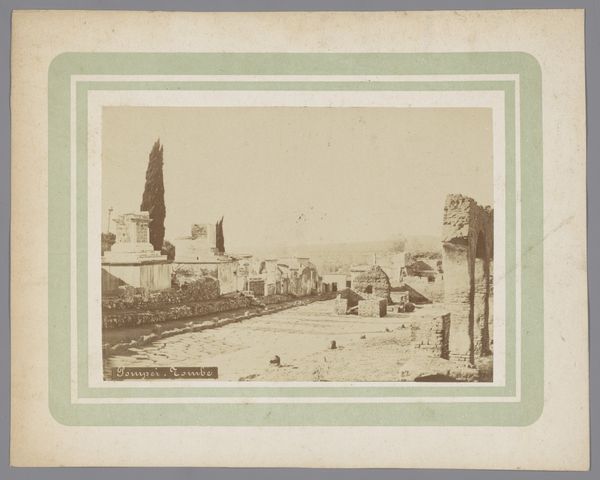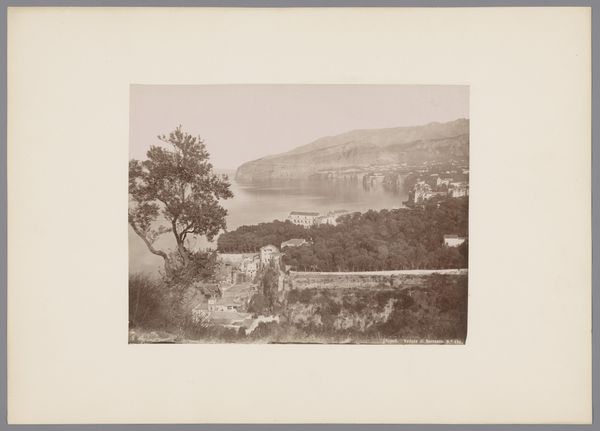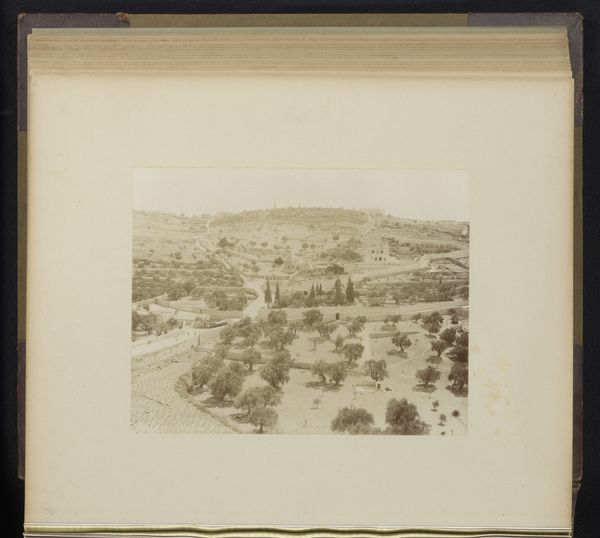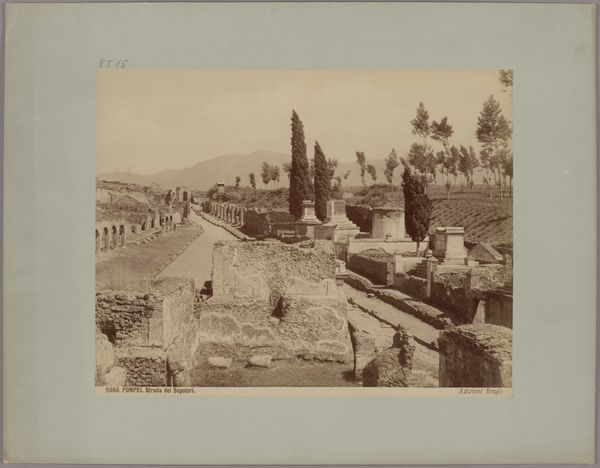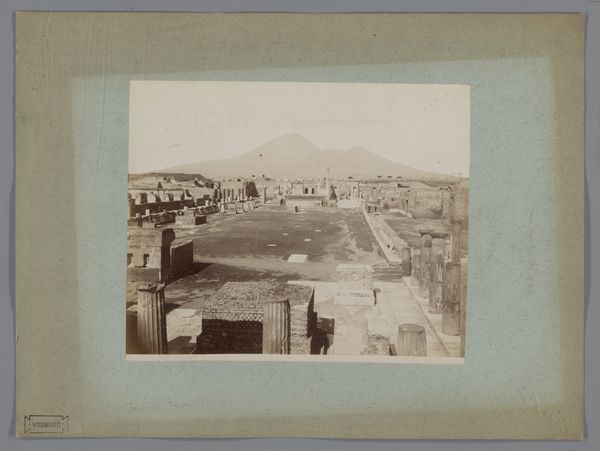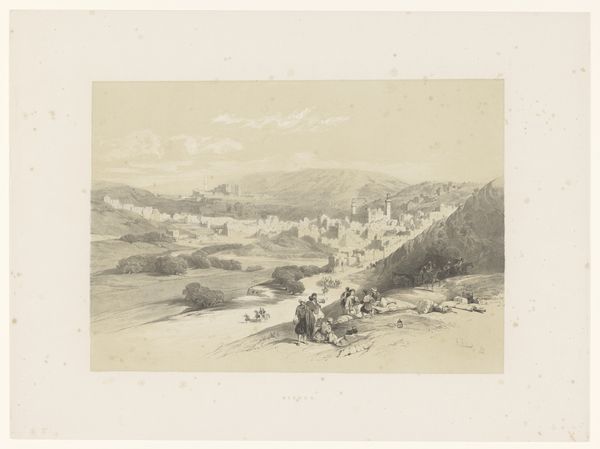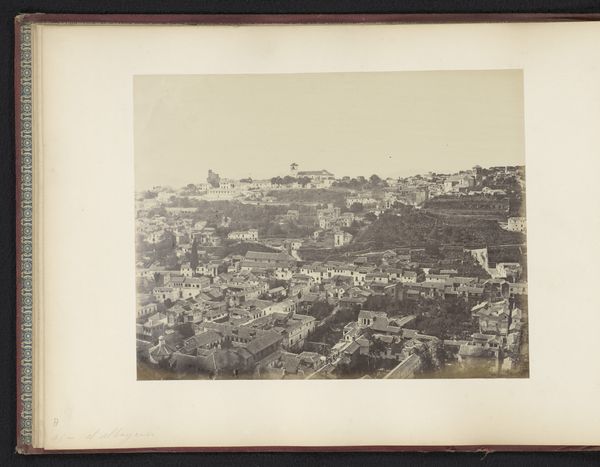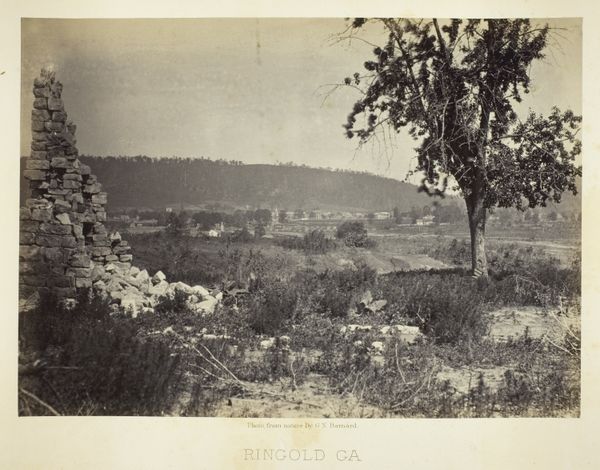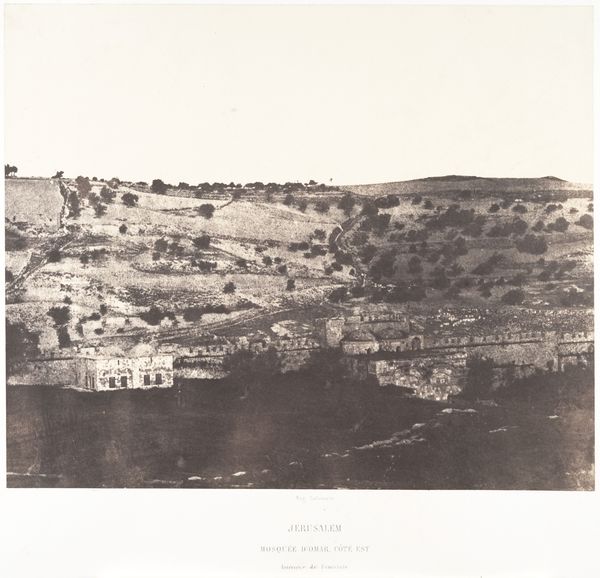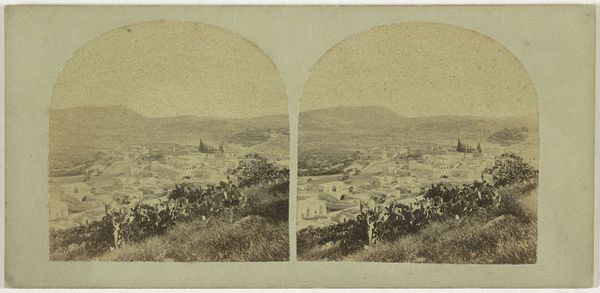
photography, gelatin-silver-print
#
aged paper
#
toned paper
#
muted colour palette
#
landscape
#
photography
#
orientalism
#
gelatin-silver-print
Dimensions: height 212 mm, width 262 mm
Copyright: Rijks Museum: Open Domain
Curator: Welcome. Before us, we have a gelatin silver print titled "Gezicht op Baalbek," attributed to Maison Bonfils, dating roughly between 1875 and 1900. Editor: It feels very still, doesn’t it? Muted color palette, giving it an almost dreamlike quality, despite the obvious monumentality of the architecture in the distance. There’s a tangible feeling of distance. Curator: The composition is fascinating, isn’t it? The photographer uses a high vantage point, creating distinct layers. The foreground shows what looks like a humble settlement, drawing our eye towards the colossal ruins in the middle ground. A lone tree on the right acts almost like a repoussoir, framing the scene. Editor: I find it problematic. Consider the context: orientalism, colonial gaze… These images romanticized the “exotic” East. It’s presented to a Western audience. What is emphasized? The ‘grandeur’ of ruins, but everyday life appears picturesque, flattened. I question who is profiting from this narrative. Curator: I see your point about the potential for orientalist readings, yet the formal elements are carefully considered. The arrangement of the image and tonal variations create depth and draw attention to particular architectural forms. I find the lines of perspective created by buildings rather strong. Editor: But whose perspective truly? Isn’t this image subtly reinforcing a power dynamic where Western eyes observe and interpret the East through a lens of idealized decay and timelessness? I’d be very interested to see the ruins reclaimed. Curator: Undoubtedly, these kinds of images perpetuated certain viewpoints. Yet, it captures a particular historical moment—the meeting point between past civilizations and contemporary life. It does so via the careful organization of visual elements. Editor: Well, yes, and to see it today forces the viewer to recognize this historical lens with which they are viewing the Middle East. It should make one reflect on what one "knows," or assumes to know, about the East, from a position of relative privilege. Curator: True, a constant critical re-evaluation enriches our understanding of these photographs and the period. Thank you for your view on its place in art history and current conversations about these images. Editor: It's a dialogue worth having. Thanks.
Comments
No comments
Be the first to comment and join the conversation on the ultimate creative platform.
